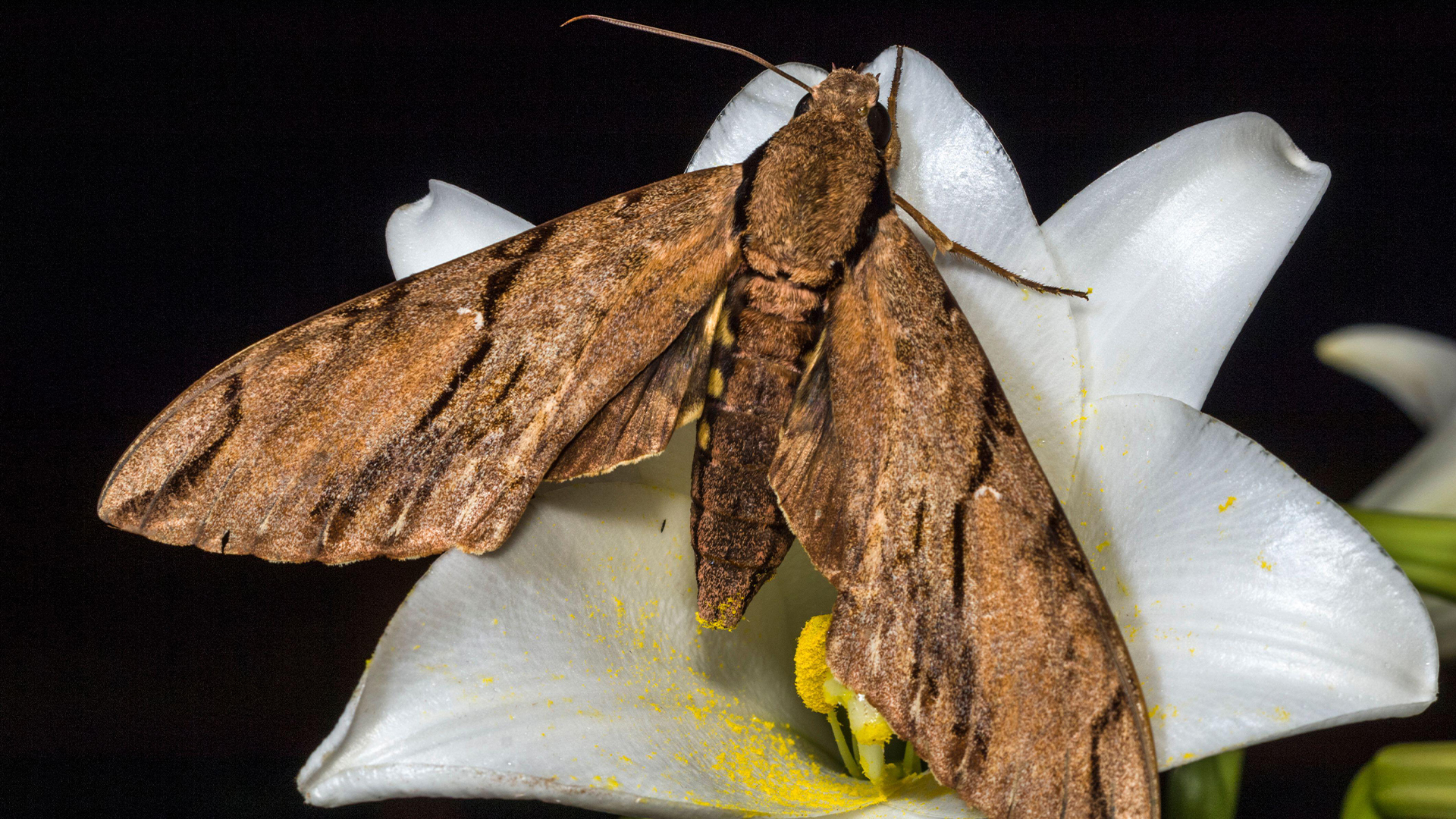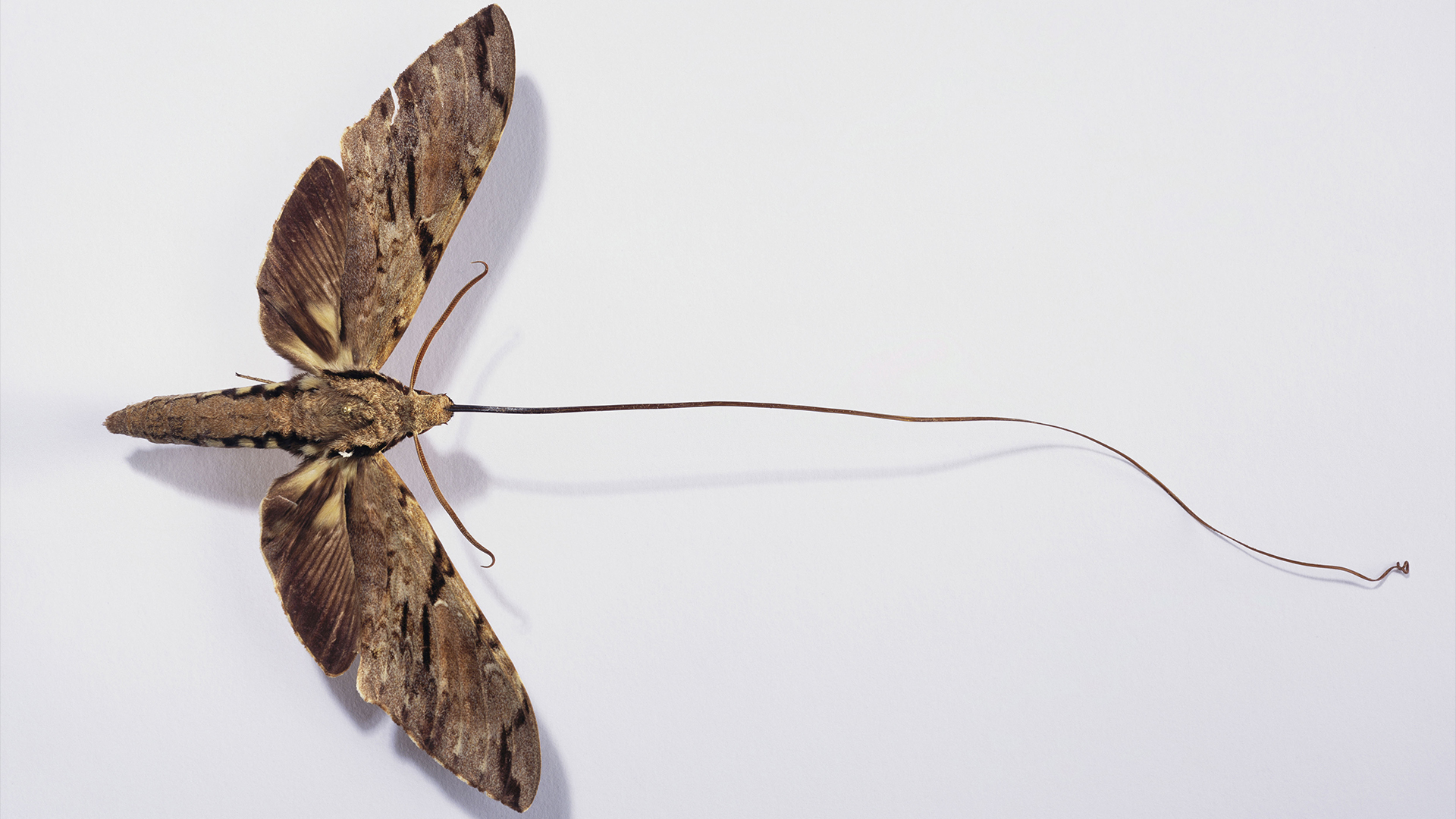Wallace's sphinx moth: The long-tongued insect predicted by Darwin decades before it was discovered
Darwin and fellow naturalist Alfred Russel Wallace predicted the existence of Wallace's sphinx moth from an orchid with an extremely long nectar tube.

Name: Wallace's sphinx moth (Xanthopan praedicta)
Where it's found: Lowlands of Madagascar
What it eats: Nectar of Darwin's orchid (Angraecum sesquipedale)
Why it's awesome: In 1862, Charles Darwin received a Madagascan orchid in the mail. The flower had an extraordinarily long nectar tube, called a nectary, measuring 1 foot (30 centimeters) in length. In a letter to a friend, he described the orchid as "astounding" and wondered what pollinator might be able to feed on the nectar. "Good Heavens what insect can suck it," he wrote. A couple of days later, in another letter to the same friend, he gave a more specific prediction: "what a proboscis the moth that sucks it must have!"
While Darwin predicted that the orchid would be pollinated by a long-tongued moth, when naturalist Alfred Russel Wallace described the orchid in 1867, he said some of the larger species from the the Sphingidae family of moths (known as sphinx moths or hawk moths) had proboscises almost as long as the nectary of Angraecum sesquipedale.
The two naturalists were proved right when such a long-tongued moth was found in Madagascar. It was described in 1903 as a subspecies of the Morgan's sphinx moth (Xanthopan morganii) and given the scientific name X. m. praedicta. It wasn't until the 1990s that the pollination predicted by Darwin and Wallace was observed and photographed.
More recently, the moth was determined to have the longest insect tongue. And a taxonomic study published in 2021 concluded that the insect should be classified as its own species and was named Xanthopan praedicta.
Get the world’s most fascinating discoveries delivered straight to your inbox.
"Imagine my excitement in 2019 when I unrolled the proboscis of a Wallace's sphinx moth that had arrived on the balcony of a research station in Madagascar!" David Lees, curator of moths at the Natural History Museum in London and co-author of the 2021 study, told Live Science in an email. "Its 28.5-cm-long [11.2 inches] proboscis turned out to be the longest yet recorded for any insect, let alone hawk moth."
Editor's note: The headline of this article has been corrected to say the moth was discovered decades before being described.

Megan Shersby is a naturalist, wildlife writer and content creator. After graduating from Aberystwyth University with a BSc (Hons) degree in Animal Science, she has worked in nature communications and the conservation sector for a variety of organisations and charities, including BBC Wildlife magazine, the National Trust, two of the Wildlife Trusts and the Field Studies Council. She has bylines in the Seasons anthologies published by the Wildlife Trusts, Into The Red published by the BTO, and has written for the BBC Countryfile magazine and website, and produced podcast episodes for its award-winning podcast, The Plodcast.




